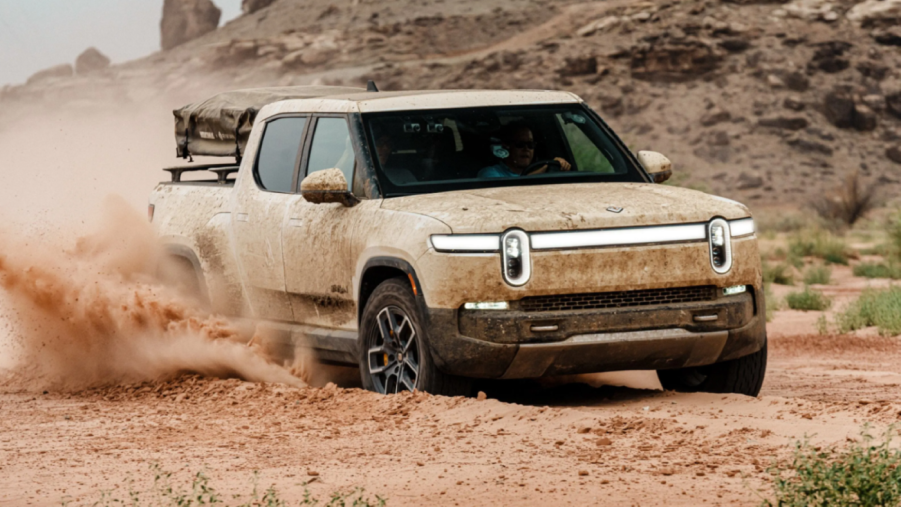
Rivian R1T’s Range Is Cut in Half When Towing Larger Loads
There is such a demand for the Rivian R1T that people are buying and selling them for a profit, not that dissimilar to the PS5 debacle. Several auction sites like eBay and Cars & Bids have listed Rivians that are going for nearly double the price in some cases. Clearly, the demand is there, but how does the Rivian compare to its gas-powered counterparts?
One major concern for EV skeptics is towing capacity and driving range. Let’s take a look at how the towing capacity affects the range in the Rivian R1T.
Towing capacity and driving range of the Rivian R1T

Technically, the Rivian R1T can tow up to 11,000 lbs. However, the manufacturer warns that the range might be cut by roughly 50% when towing, depending on the size of the load. The EPA range rating for the vehicle is 314 miles. Therefore, half of that would be 157 miles.
When you are traveling, stopping every 150 miles and waiting to charge is a hassle. At best, using the Rivian Adventure Network, Rivian’s own nationwide network of DC fast chargers, you can charge up to 140 miles of range in 20 minutes to the R1T and R1S.
What is the Rivian R1T’s range when towing a 7,000-lb trailer?
Auto Evolution reports that one owner hooked his Rivian R1T up to a 7,000-lb aluminum trailer and made a short trip in it. This owner reported an average result of 0.96 miles per kWh for a 2022 Rivian R1T fitted with a standard 135-kWh battery pack, which is almost basically what the EPA said the R1T would do when towing. In colder climates, that number could be even lower.
That may seem a little disappointing, but there are some perks to using an EV to tow. The owner said that the instant torque was beneficial when maneuvering the heavy trailer. You simply step on the gas and it goes without hesitation, which is not the case with an internal combustion engine.
The high towing capacity is considerably better than some of the best tow capabilities of traditional fuel-powered trucks of the same size. If Rivian can get more range and more battery capacity, it could realistically dominate the truck market in the coming years.
Rivian’s rocky start
The supply chain disruption that has plagued the automotive market has created production woes for established manufacturers. For Rivian, this meant it was plagued with not only the standard barriers a new car manufacturer faces but additional parts shortages as well. Semiconductors are in short supply, and the prices of critical raw materials like nickel, aluminum, palladium, and cobalt have soared. These metals are used for making batteries for EVs, among other things.
To add to this, the Russian invasion of Ukraine has exacerbated an already bad situation. Due to sanctions imposed on Russia, the price of nickel has been impacted since Russia is one of the leading exporters of nickel.
Despite stalled production, Rivian is forging ahead with its lineup. In addition to the R1T electric pickup truck, Rivian also offers the R1S electric SUV and the RCV electric commercial van. There are also future plans to add another SUV to the lineup. The Rivian R1T with the medium-sized battery offers 835 horsepower and 908 lb-ft of torque and an average battery range of 260 to 314 miles.
Rivian has said that they expect to fill their pre-order backlog of approximately 55,400 R1T trucks by the end of 2023. Ford has experienced similar backlogs with their version of the EV truck, the F-150 Lightning. If anyone had any doubt that the EV revolution has begun, they need only look to the pre-orders of Ford and Rivian for proof that the EV is here to stay.


